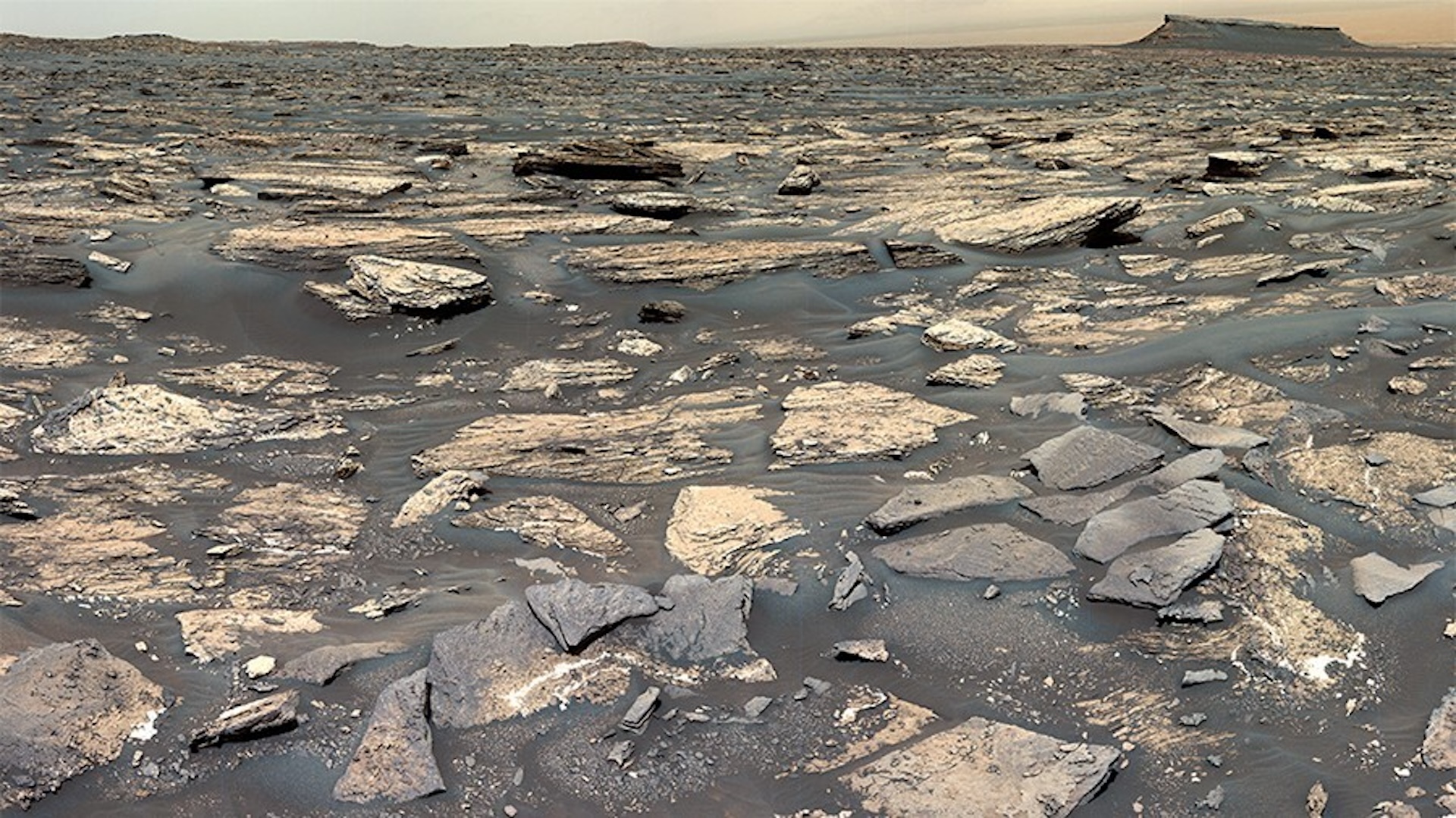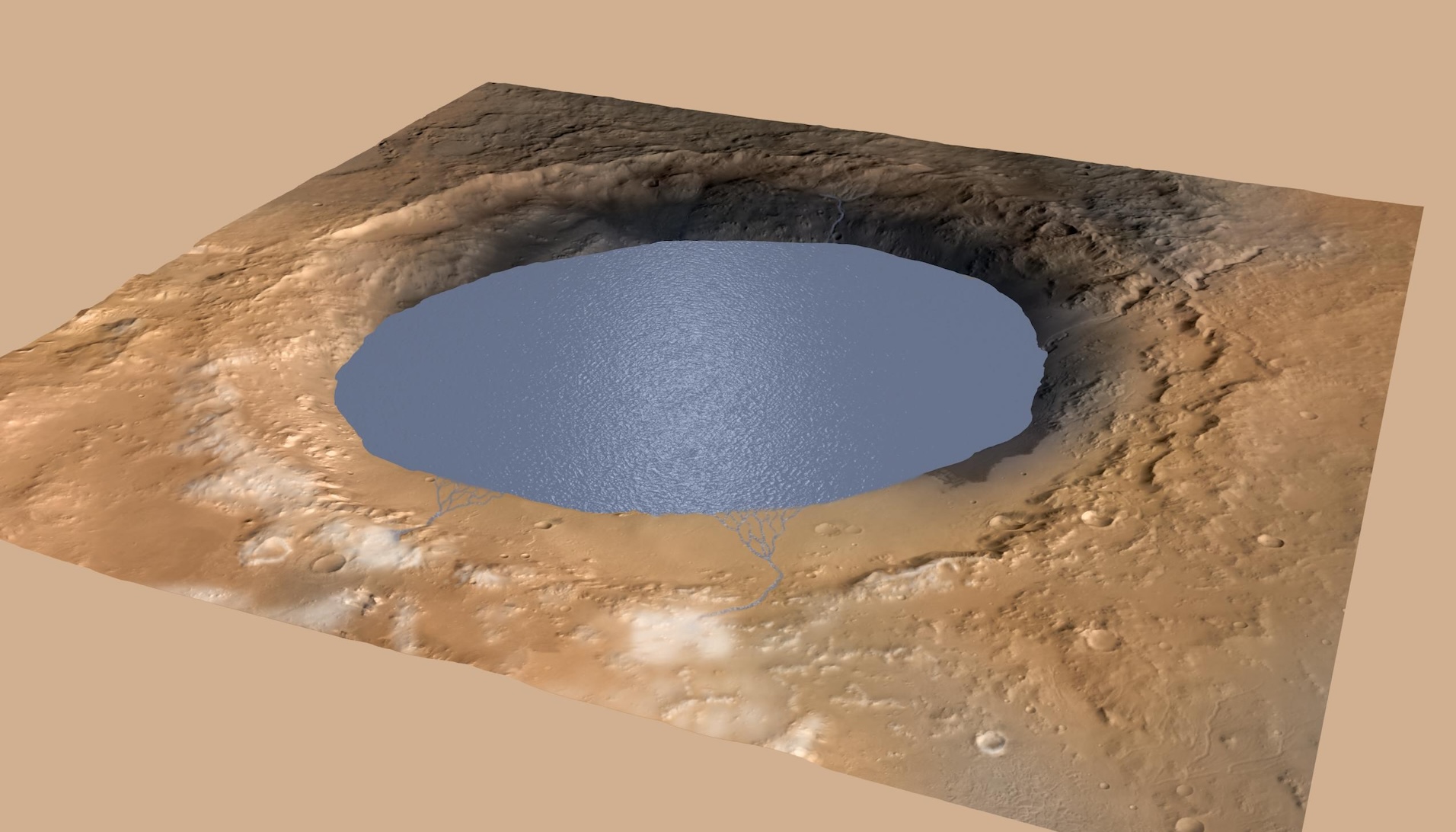
A collection of rocks scattered on an ancient shoreline on Mars might indicate that the Red Planet was once far more Earth-like than scientists previously thought.
The rocks, discovered by NASA's Curiosity rover, are unusually rich in manganese oxide — a chemical that adds to growing evidence that the once-habitable Mars may have sported Earth-like oxygen levels and life-friendly conditions early in its history, scientists say.
NASA calls manganese on Earth "an unsung hero in the evolution of life." Scientists know from our planet's geological history that manganese was abundant in rocks and in the oceans before the earliest life-forms emerged roughly 4 billion years ago and that it paved the way for oxygen that most life now relies on.
The only known ways to produce manganese oxide, however, involve either abundant oxygen or microbial life. But there isn't strong evidence for the former on Mars, and none for the latter, leaving scientists puzzled by how the chemical formed in the newfound rocks.
Related: Hundreds of black 'spiders' spotted in mysterious 'Inca City' on Mars in new satellite photos
Forming rocks rich in manganese oxide "is easy to do on Earth because of microbes and because of oxygen — which [also forms] because of microbes — so it all points back toward life," lead study author Patrick Gasda, a research scientist at Los Alamos National Laboratory in New Mexico, told Live Science. "We of course have no evidence of life on Mars, so if we're trying to form oxygen in a fully abiotic system, our current understanding of Mars doesn't explain that."
The Curiosity rover came across the heavily eroded rocks while trekking through the middle of Gale crater, a 96-mile-wide (154 kilometers) ancient lake bed that the rover has been exploring since 2012. The rover's ChemCam instrument "sniffed" the manganese oxide within the rocks by vaporizing tiny bits with a laser and then analyzing the resulting cloud of plasma. The compound constitutes nearly half of the rocks' chemical makeup, according to the new study, which was published last week in the journal JGR Planets.

At the site where Curiosity found the new rocks, the rover recorded 10 to 15 meters (33 to 49 feet) of elevation change. Although that's tiny when compared with the hundreds of meters Curiosity has climbed over the years, it is "pointing us toward something special going on in that place," Gasda told Live Science. The rock texture where the new sandstones were found appears to have transitioned from "curved" to "flat-lined" — a change Gasda and his colleagues are interpreting as a river channel opening out into a lake.
"That means we're at the shore of the lake or near the shore of the lake," Gasda said. He noted that this interpretation is uncertain due to limited data, because Curiosity drove past the region just once. "That made the interpretation really challenging, but this is our best hypothesis," he added.
If the hypothesis is correct, the rocks may have been dumped in the region when the river water slowed down as it entered the lake, similar to manganese-oxide-rich rocks that have been found on the shores of shallow lakes on Earth.
The newfound rocks are "another line of evidence for liquid water on Mars in the past, which is beneficial for life," Manasvi Lingam, an astrobiologist at the Florida Institute of Technology who was not affiliated with the new research, told Live Science. "This work provides evidence in favor of habitability."
However, not everyone agrees that the newfound rocks indicate an oxygen-rich Mars. According to Jeffrey Catalano, a professor of Earth, environmental and planetary sciences at Washington University in St. Louis, who was not involved in the study, the presence of oxidized rocks could help scientists understand whether Mars, like Earth, went through "a punctuated transition" from a lower-oxygen period and a higher-oxygen period. "The impact of manganese oxides on our understanding of such a transition, however, have been overstated, here and in prior work," he told Live Science.
Catalano was part of a 2022 study that found manganese oxide could easily form under Mars-like conditions without atmospheric oxygen. That research, which was based on lab experiments, showed that elements such as chlorine and bromine, which were abundant on early Mars, converted manganese dissolved in water into manganese oxide minerals. This finding offered an alternative to oxygen that could explain rocks like the newfound ones on Mars.
"There are several life forms even on Earth that do not require oxygen to survive," Kaushik Mitra, a geochemist at the University of Texas at San Antonio who led that study, said in a statement in 2022. "I don't think of it as a 'setback' to habitability — only that there were probably no oxygen-based lifeforms."







